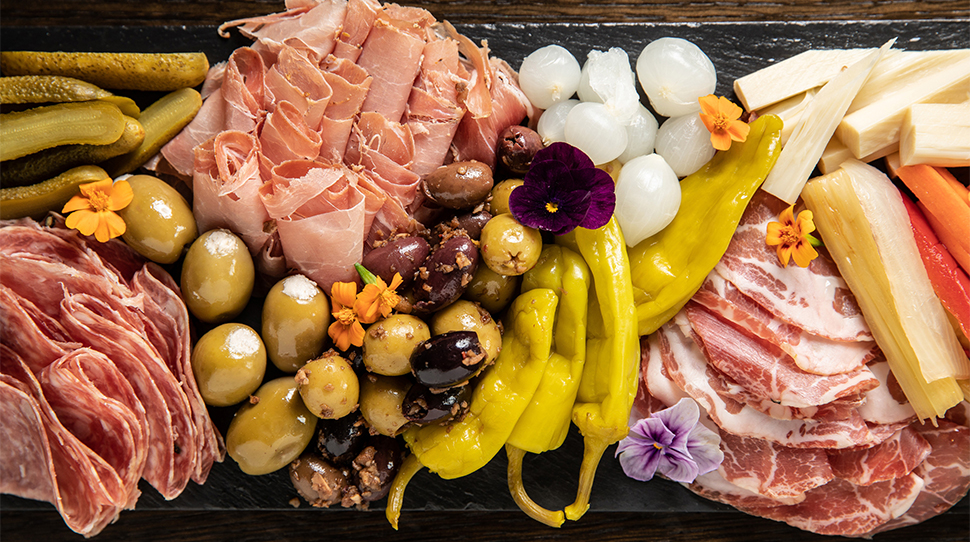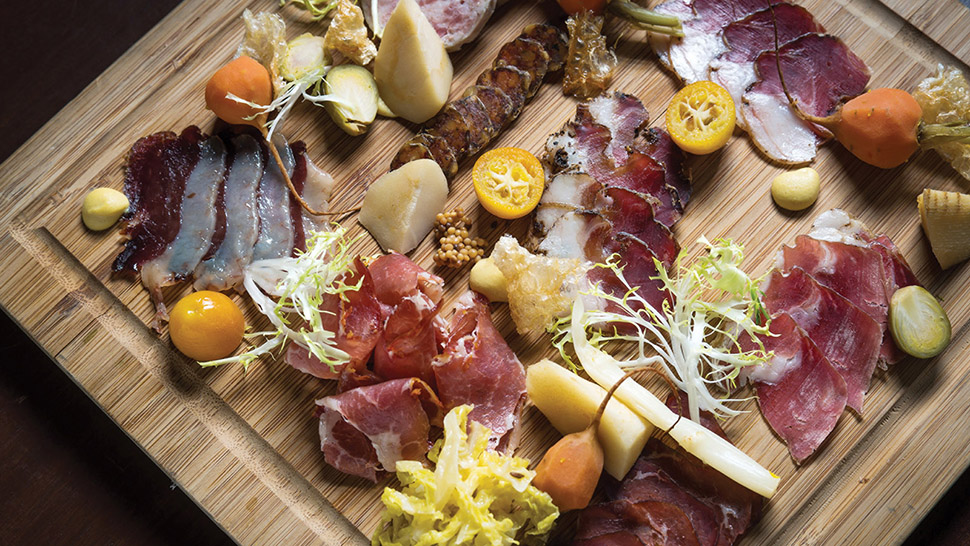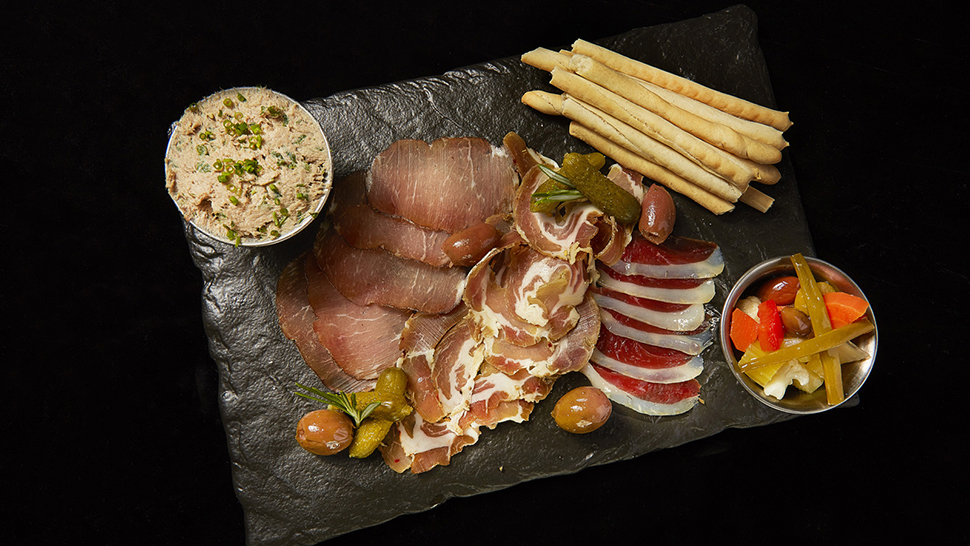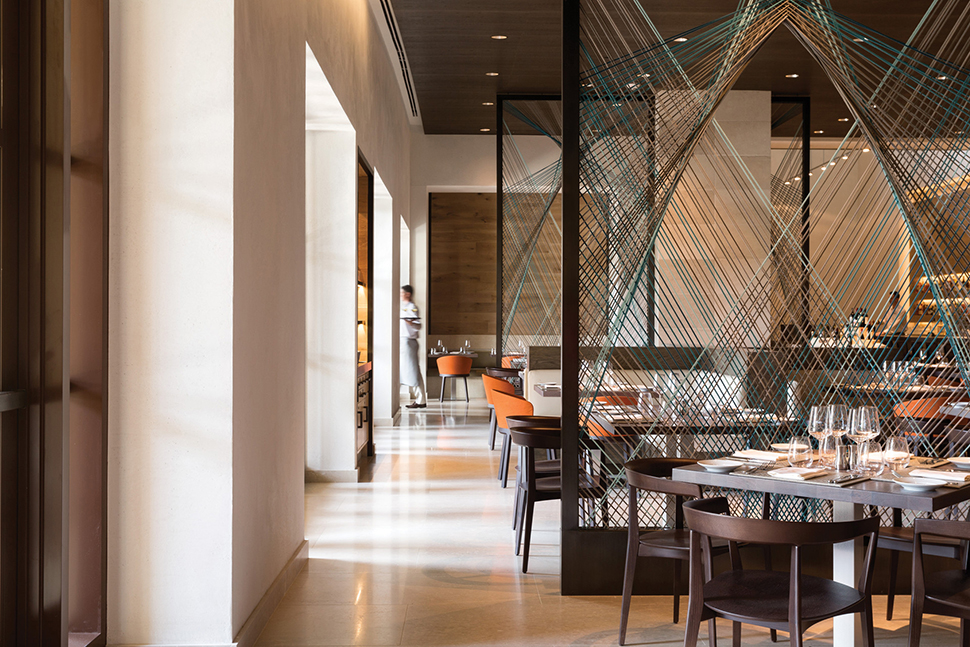

Charcuterie boards teeming with meat slices, cheese wedges and other finger foods have seen a resurgence, popping up in restaurant menus, market takeout options and your Instagram feed.
“Charcuterie is becoming more popular since many chefs are making their own, and curing their own meat,” says Four Seasons Resort Orlando at Walt Disney World Resort executive chef Fabrizio Schenardi. “Also, the American public has a better understanding of quality cured meats and the craft and story behind it. Charcuterie is no longer only pork in the mind of the average consumer; it’s also beef, veal, duck, fish and more.”
Another reason for its popularity is its simple preparation. “People like something to share and that’s quick to eat, and charcuterie is the perfect snack, appetizer, it’s great for sandwiches, and many times you can find it in many pasta dishes or used in sauce,” says Schenardi, a charcuterie expert who makes his own cured meats at Ravello, the Orlando hotel’s modern Italian restaurant. “Yes, it is like parsley, and you can find it almost everywhere.”

The Torino, Italy, native says that Italians offer their own spin on the platter. “An Italian charcuterie board is a mix of curiosity, creativity, history and a lot of patience. Italians have been making charcuterie for centuries — and in certain cases, millennia,” he says. “This rich history has been passed through generations, and if you buy real imported Italian charcuterie, you can taste the difference with the mass-produced outside of Italy. Many times the charcuterie has been rushed and made in a temperature-controlled room in order to increase productivity instead of taking their time with natural air. The thickness and the proper knife used to cut charcuterie is very important to enjoy it correctly — and don’t forget the bread or grissini.”
Even if you can’t head to Italy for some charcuterie, you can enjoy it at home. But there’s a fine line between making an appealing charcuterie board and making a mess. Just in time for holiday entertaining, Schenardi shares some tips on how to create a beautiful board:
Do the prep work
A proper charcuterie board starts with the right vessel. Schenardi advises using a wooden board or a terra-cotta plate. “It gives it a homier look and is refined at the same time,” he says.
Next, ready the cheese. “Hard cheese like Grana Padano, Parmigiano, etc. should stay a room temperature,” he says, adding that this will give the selections a better profile and increase the pungent perfume. A creamy cheese should be taken out of the refrigerator for at least 30 minutes before consumed.
And don’t worry about making every slice of meat or cheese look identical. “Charcuterie should have a natural look when on a plate, and needs to be touched as little as possible in order to maintain the fragrance and nice display,” he says. Schenardi says it is very important to cut cheese and charcuterie just before serving it, to keep the meats moist and the natural color fresh.
To give the charcuterie board a festive touch, add sprigs of holly, cranberry sauce and candied nuts. Mini twinkling lights make for a glowing presentation.

Feature a variety of cured meats
Fill your charcuterie board with Italian meats, like prosciutto, mortadella, bresaola (beef seasoned with lemon juice, extra virgin olive oil and black pepper), lonza (cured pork loin) and speck (lightly smoked pork). “We use speck the most, imported direct from Italy,” Schenardi says about the Orlando restaurant. “Sometimes, we like to produce our own in-house charcuterie, such as duck prosciutto, porchetta, nduja [a spicy pork spread] and salame cotto [pork sausage].”
Schenardi’s favorite is an Italian staple: prosciutto di Parma or San Daniele, sliced razor-thin. Though he also enjoys porchetta paired with toasted olives.
Cheeses are a must
According to Schenardi, fontina, scamorza (a mild white cow’s milk cheese), gorgonzola, frico (lacy, crispy cheese rounds), Parmigiano-Reggiano and taleggio are all tempting selections.
When mixing cheese and meat, Schenardi says it is important to reflect a variety of textures. “Usually, I like to pick three cheeses — one soft, such as ricotta, and mix it with olive oil and herbs, served with flat bread; one hard cheese, frico, paired with honey; and one semisoft, such as toma, served with roasted bell pepper compote.”

Mix in some dip
Accompaniments like honey, compote and preserves accentuate the cheese and add more flavor. “We serve our cheeses with homemade jam and marmalade, or a roasted garlic and cannellini bean spread with rosemary,” he says.
Replicate his recipe:
Cannellini Bean and Rosemary Purée Dip
- 1 cup (8 ounces) cooked cannellini beans (can be canned)
- 2 pieces of crushed garlic, lightly sautéed in olive oil
- ½ cup (3.5 ounces) extra virgin olive oil
- 1 lemon (juice only)
- 1 fresh stem of rosemary
- Sea salt and pepper to taste
- 1 pinch of sweet paprika
Purée the cannellini bean with the garlic, add the extra virgin olive oil, then add the lemon juice. Chop the rosemary and add it to the cannellini bean purée. Adjust salt and pepper, add the paprika.
Serve cold. It can last up to three days in the refrigerator.
Bring on an array of bread
To round out the board, some carbs are needed. Schenardi suggests grissini (crispy breadsticks), focaccia and taralli (olive oil crackers). Consider incorporating crackers or with sesame seeds or poppyseeds for additional tastes and textures.
Sprinkle in vegetables, fruit and nuts
Weave in vegetables, fruits and nuts around the meats and cheeses on the board. Schenardi recommends grilled and marinated veggies — such as artichokes, eggplant, bell pepper and olives — for bursts of flavor, color and balance.
“I don’t particularly like fruit on my board, with the exception of fresh figs, cantaloupe and grapes,” he says. Though he does like piling in nuts, such as walnuts, pistachio and hazelnuts.
